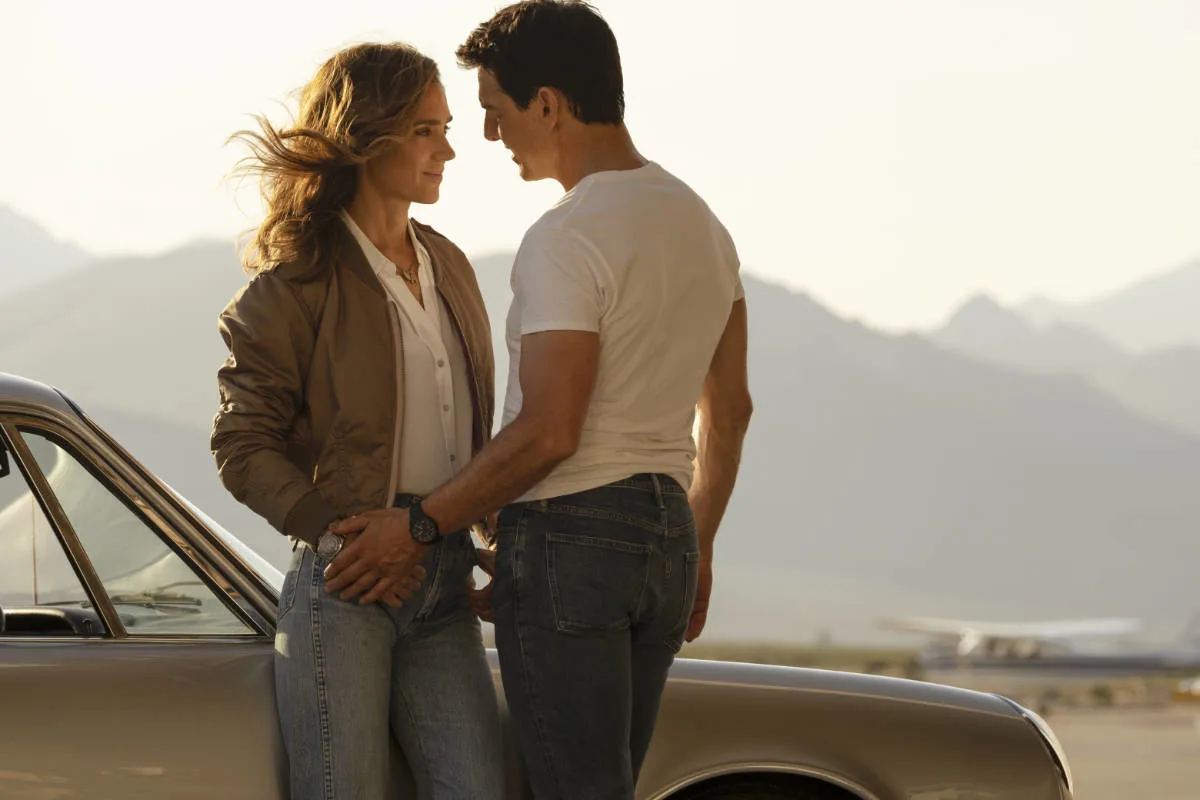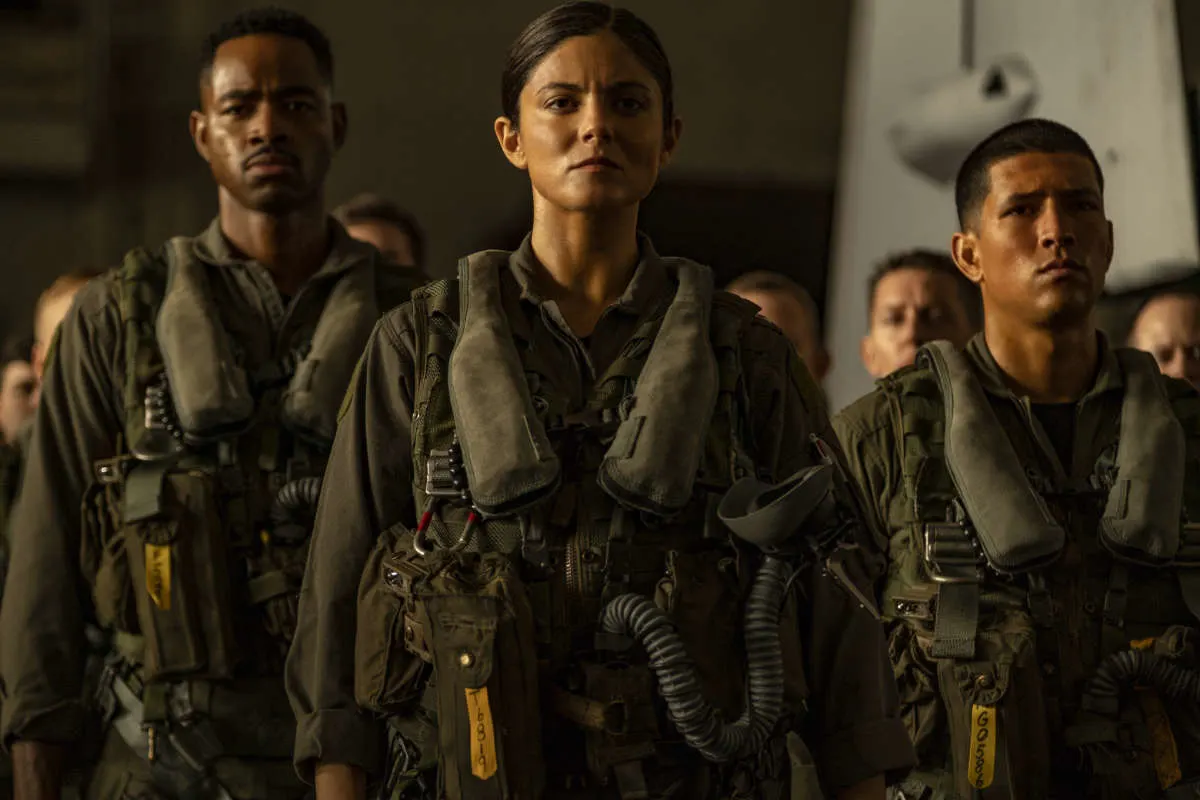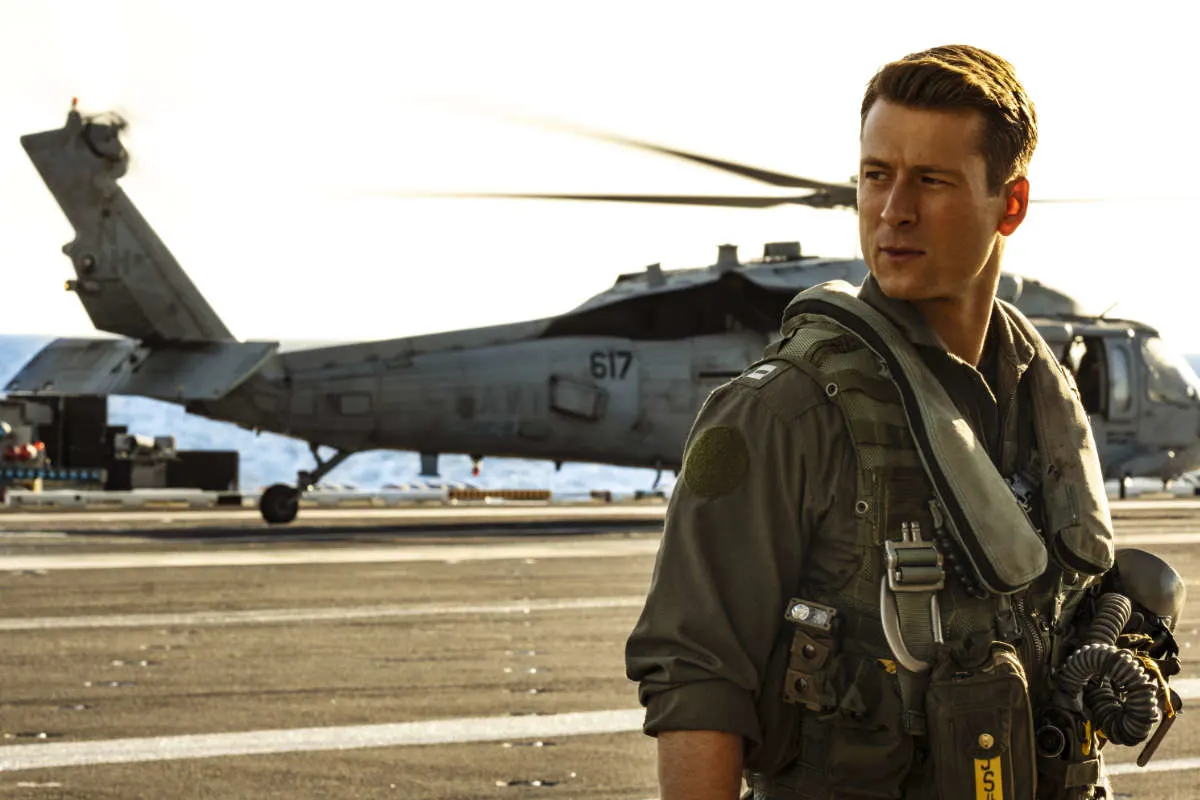Bombastic, over the top, and unapologetically fun, Top Gun: Maverick is the Platonic ideal of an entertaining studio film, a standard bearer for what those words mean and how they can be achieved.
Of course, what they mean is different for different people. Slick, lacking rough edges or idiosyncrasy with dialogue forever in search of sharp retorts and bon mots (the sort of thing Ben Hecht perfected a century ago and everyone has chased since), but not much in the way of introspection.

Unchallenging and easy, even effortless, to enjoy, they are the kind of films that require little of their audiences, instead washing over them and carrying them off without a struggle. Top Gun: Maverick never seeks to escape this paradigm and doesn’t need to, offering exactly the kind of escapist thrills the original Top Gun has the reputation (if not the actual experience) of producing.
Some years have passed since the first film, and Pete ‘Maverick’ Mitchell (Tom Cruise) is noticeably more weathered and subdued than he once was, but somehow Maverick is still in the air. Though most of the young man’s braggadocio has worn off (not all, just most), Maverick still does what he wants when he wants, including ignoring orders and engineer warnings about flying hypersonic aircraft too fast or skimming mountaintops on missile runs.

Rather than doing so to satisfy some internal competitive drive, Maverick’s concerns have become much more external, be it protecting the jobs of other test pilots by proving their experimental plane works (against orders) or protecting the lives of young Top Gun graduates by proving his plan to attack a vaguely ominous nuclear weapons facility (controlled by an unnamed rogue state) is the only way they’ll survive the assault.
More importantly, it’s the nearly 60-year-old’s last ride, leaving him to finally consider what a life without the need for speed is like and leaving us to consider if we’re ready for an introspective Maverick. Mostly yes, but at least in part because, as said, introspection is something Maverick is only interested into a point. It’s a flavor, not the dish itself.

And Mitchell himself is only willing to go so far as well. One of the many small pleasures in Top Gun: Maverick (among the larger ones) is the return of the cocky and arrogant persona that Cruise rode to stardom in the 1980s but has largely cast aside in favor of the more earnest and erstwhile Ethan Hunt types. His casual undermining of various Admirals and their disapproving authority, even after crashing a hundred-million-dollar experimental plane, is a reminder of why Tom Cruise became Tom Cruise in the first place.
Of course, it helps that he’s protected by the immensely powerful Admiral Tom ‘Iceman’ Kazansky (Val Kilmer), with whom Pete has formed a strong friendship over time (albeit one which plays out primarily over text messages). At the same time, just as Cruise has grown and changed, so has Mitchell, and there is a sad melancholy underlying this version as he realizes what he’s given up in the name of speed and whether it was all worth it.

Mitchell’s not the only one making changes, and for the most part, they’re all for the better. As much as Top Gun: Maverick relentlessly plays the nostalgia card, it also leaves the American jingoism and flashy machismo that defined a lot of ’80s blockbusters buried in a time capsule. In its place are the outlines of threats given less specificity, in part so the film is less tied to a time and a place and in part because the focus is on the pilots themselves and what they must do to get ready for the threat.
Moving from student to teacher, Maverick must take a group of untried Top Gun graduates and make them ready for aerial combat in an age of drones when no one knows how to do it anymore. That includes the son (Miles Teller) of his late friend Goose, whom Maverick has been wrong-headedly (if well-intentioned) keeping down in his career in order to protect him from similar accidents.

The characters are the same type of quick sketches as the originals, distinguishable more by their call signs than their personalities, with each given exactly one characteristic, which is repeated continually so that we can tell them apart quickly.
But they’re also less competitive foils for Pete to overcome and more young warriors for him to mentor, a paradigm both more readily empathized with and better canvases for Cruise’s longtime creative partner Christopher McQuarrie (who has helped him through multiple impossible missions, Reacher films and the Edge of Tomorrow) to meld together from the various drafts the film has been through over the years.

McQuarrie knows exactly what this film is and exactly how much to build around the main focus without losing sight of it. And that focus is planes. As much the film works to remind us it is a sequel, at no point after the opening credits does incoming director Joseph Kosinski (replacing the late Tony Scott, who directed the original) seek to replicate the look of Top Gun. Instead, he wants to replace it by re-placing his audience from their comfortable seats into the very heart of the action any chance he can.
He has cinematographer Claudio Miranda plant his cameras onto anything that’s going to go fast and makes sure we’re looking directly into the actors’ faces as they are blasted off into the heavens or race down a tarmac on a motorcycle. Putting their ‘pilots’ into real planes as much as possible and giving us a first-person view of dogfights and aircraft carrier launches gets the audience as close as they likely ever will to flying in a fighter jet, especially in Top Gun: Maverick’s stunning IMAX version.

As much as the students are learning the recipe for the final, much-advertised dog fight, so is the audience with them, and when it arrives, it does not disappoint. Crimping more than a few pieces from The Dam Busters and Star Wars (right down to the small target at the end of a long trench), it is a thrilling bit of photography, visual effects, and editing that more than lives up to the billing even it does toy around with more than one false finish.
Even better, it ties up not only the plot points Maverick has drilled into us but also all of the small character beats into one neat little bow, the way light entertainment should do but doesn’t. At least not regularly.

In nearly every way an improvement over the original, Top Gun: Maverick is the rare sequel that not only bests its forerunner but the equally rare popcorn film that engages all of the audience’s attention with balance and skill and makes it look easy.
Exchanging red-meat masculinity for maturity (with a dose of melancholy) and optimism, and old models with real planes, Maverick grows and expands on the original without feeling too much a slave to it and without requiring too much of us. It is everything a summer tentpole could hope to be.
TOP GUN: MAVERICK REVIEW SCORE: 8 OUT OF 10
Opening in theaters on May 27, Top Gun: Maverick is rated PG-13 for sequences of intense action and some strong language.

Joshua Starnes has been writing about film and the entertainment industry since 2004 and served as the President of the Houston Film Critics Society from 2012 to 2019. In 2015, he became a co-owner/publisher of Red 5 Comics and, in 2018, wrote the series “Kulipari: Dreamwalker” for Netflix. In between, he continues his lifelong quest to find THE perfect tomato soup and grilled cheese sandwich combination.